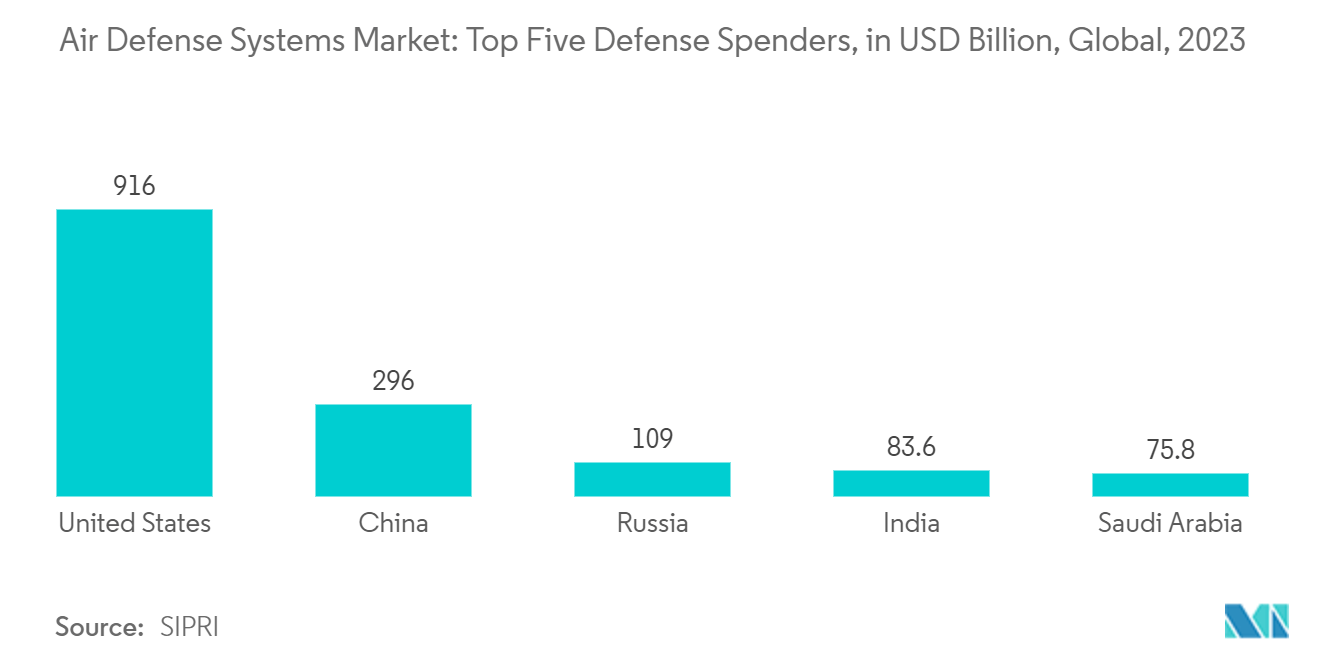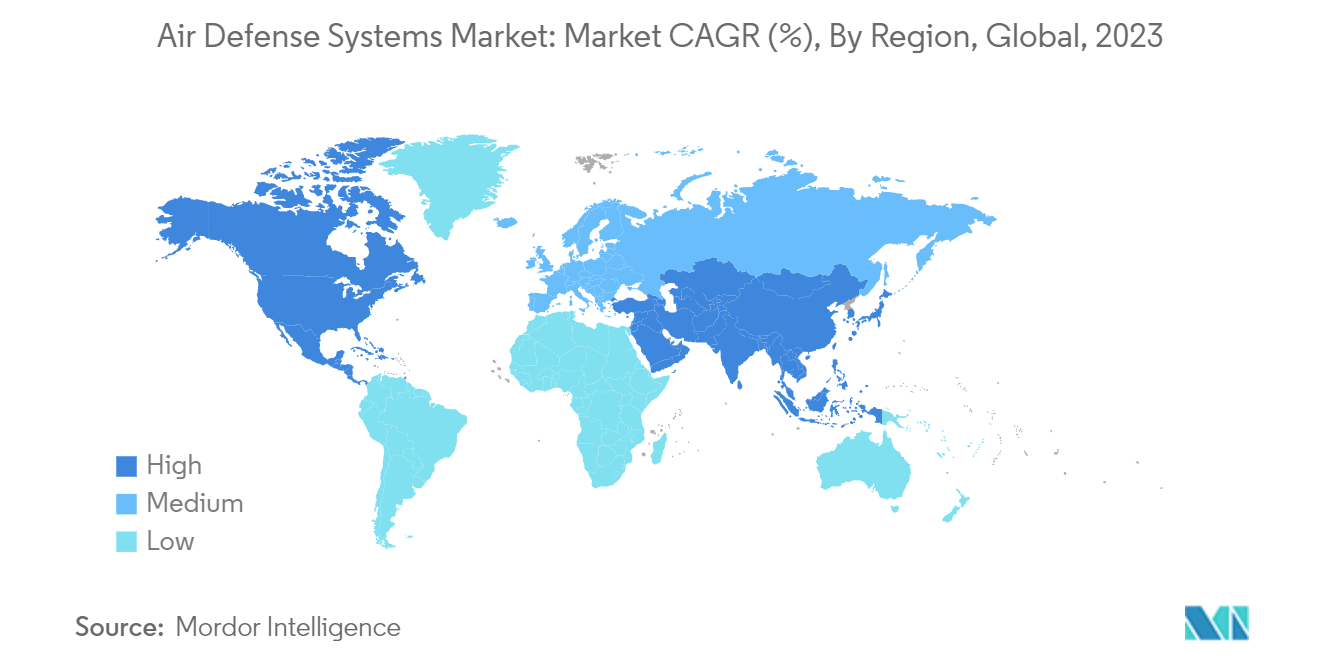Market Trends of Air Defense Systems Industry
The Air-based Segment will Showcase Remarkable Growth During the Forecast Period
With a global uptick in military spending, defense entities worldwide are ramping up their next-gen air defense systems acquisitions. This surge in procurement is aimed at bolstering military capabilities, setting the stage for substantial market growth through the forecast period.
Heightened border tensions and global conflicts drive defense forces to bolster their air defense arsenals. These forces aim to counter aerial threats by investing in advanced systems, gaining a strategic edge in evolving warfare landscapes. Illustrating this trend, in October 2023, the Czech Ministry of Defense unveiled plans to invest USD 120 million in acquiring 48 long-range, air-to-air missiles from Israel's Rafael Systems. The Czech Republic is set to deploy these missile systems by 2027.
Meanwhile, nations like India are actively pursuing the development of indigenous long-range air defense systems. In a similar move, India announced in October 2023 its plans to roll out its long-range air defense system, slated for deployment between 2028 and 2029. This system, dubbed 'Kusha' and developed by DRDO, boasts a 350-km range and is capable of detecting and neutralizing a spectrum of threats, mirroring the capabilities of the Russian S-400 Triumf. Such developments will drive the segment’s growth in the coming years.

Asia-Pacific is Expected to Dominate the Market During the Forecast Period
During the forecast period, Asia-Pacific is expected to maintain its market dominance, holding the largest market share. This can be attributed to increasing investments by regional countries in advanced air defense solutions, alongside strides in next-gen air defense weaponry. These factors collectively point to a robust growth trajectory for the market.
Heightened military spending across Asia-Pacific, fueled by rising border tensions and conflicts, has spurred a notable surge in demand for cutting-edge air defense technologies. Defense forces in the region have pivoted toward acquiring advanced systems to bolster their military capabilities. In January 2023, India unveiled plans to invest USD 522 million in domestic missiles and air defense systems, including very short-range air defense systems for its Army. Concurrently, the region witnessed a surge in developing next-gen air defense systems. In a significant milestone, Singapore's Aster 30 Medium-range Surface-to-Air missile (MSAM) achieved full operational compatibility in November 2023.
These advancements imply that medium-range surface-to-air defense systems are equipped to counter various threats, from fighter jets and helicopters to drones and precision-guided munitions. With this momentum in acquisitions and indigenous developments, the Asia-Pacific air defense market is poised for substantial growth in the coming years.


